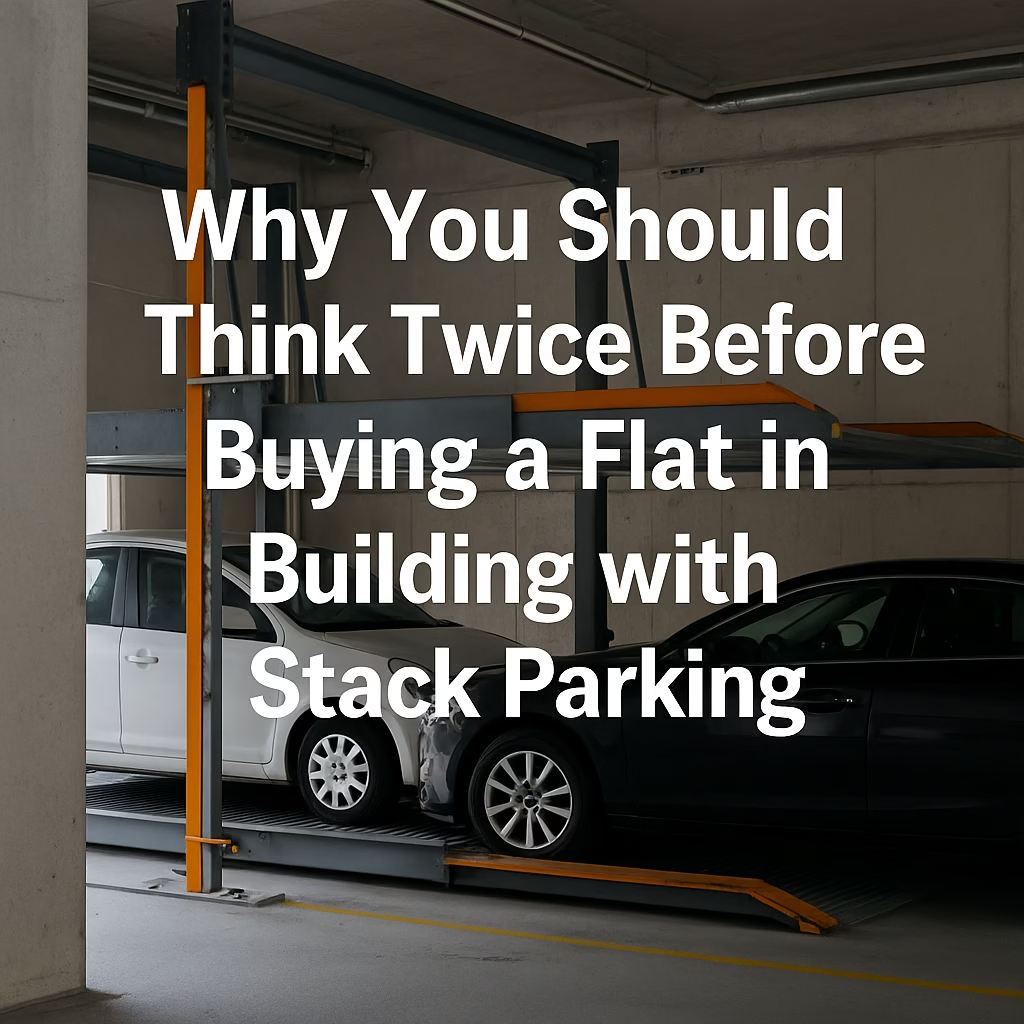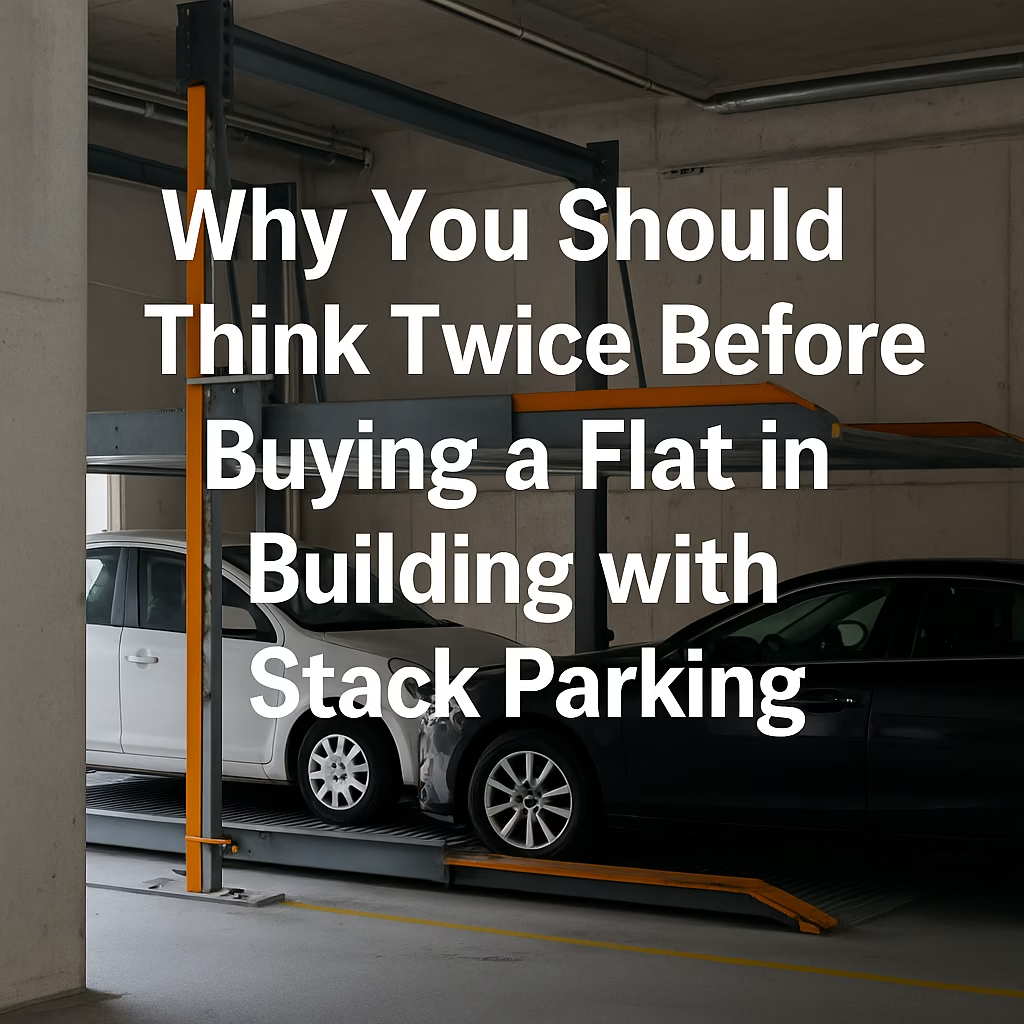
With parking space becoming a luxury in cities like Mumbai, stack parking systems are increasingly common in newly constructed buildings and redevelopment projects. These vertical parking systems promise efficient space usage, especially in tight urban plots—but at what cost?
Recent accidents in Mumbai linked to stack parking have raised serious concerns about their safety, reliability, and long-term viability. Before you invest in a flat in a building that offers stack parking, here’s what you must consider.
What Is Stack Parking?
Stack parking or mechanical car parking involves a multi-level system where cars are parked vertically using hydraulic lifts. These systems can be fully or semi-automatic and are commonly found in buildings where ground space is limited.
The Hidden Risks of Stack Parking
While stack parking sounds convenient in theory, several risks and issues have been observed in practice—particularly in densely populated urban areas like Mumbai.
1. Fire Hazards & Electrical Failures
There have been multiple incidents in Mumbai where fires have broken out in stack parking areas due to electrical short circuits or overheating of the system. A recent fire in Andheri damaged several vehicles and raised questions about fire safety compliance.
2. Mechanical Failures
Hydraulic and mechanical malfunctions can cause vehicles to get stuck, fall from a height, or become inaccessible for hours. If the system fails mid-operation, retrieval may require a technician, increasing both inconvenience and risk.
3. Human Error & Poor Maintenance
Not all residents or staff are trained to operate stack parking correctly. Improper use or low-cost maintenance can lead to accidents, vehicle damage, or even injury.
4. Emergency Inaccessibility
During emergencies (like fires or medical crises), quick access to cars is nearly impossible. Stack systems don’t support instant retrieval, delaying evacuation or transport.
5. Increased Wear and Tear
Stack parking can lead to faster vehicle wear and tear, especially with older or low-clearance cars. Alignments and body damage are not uncommon in poorly calibrated systems.
Recent Incidents in Mumbai
Several notable incidents in the last few years have highlighted the dangers of stack parking:
- Andheri (2023) – A fire in the stack parking area of a high-rise led to destruction of 8 cars. The system failed to shut down in time.
- Borivali (2022) – A car fell from a hydraulic platform after a mechanical fault, injuring a technician.
- Lower Parel (2021) – Power failure caused multiple cars to get stuck for over 12 hours with no alternate exit route.
These incidents point to both system design flaws and lack of regular maintenance as contributing factors.
Is There Any Positive Side?
Yes, there are some advantages to stack parking—when it’s done right.
- It maximizes land use, allowing more parking slots in limited space.
- Well-maintained stack systems in premium buildings can be reliable and automated, with minimal effort required from residents.
- Eco-friendly designs with solar backup and smart monitoring are becoming more common in newer high-end projects.
However, these positives only hold true if the developer invests in top-tier systems, 24/7 maintenance, and trained staff.
Conclusion: Should You Buy a Flat in a Building with Stack Parking?
If safety, convenience, and peace of mind are your priorities, you should be cautious about buying a flat in a building with stack parking—especially in mid-range or budget constructions where systems are often compromised to cut costs.
If you’re still considering it:
- Ask for the AMC (Annual Maintenance Contract) details.
- Check the brand and model of the parking system installed.
- Speak to existing residents about their parking experience.
- Verify fire NOC and emergency protocols.
Disclaimer:
This article is for informational purposes only and reflects general trends and publicly reported incidents. It should not be treated as legal, architectural, or engineering advice. Always consult a qualified real estate advisor, architect, or safety consultant before making a property investment decision.

